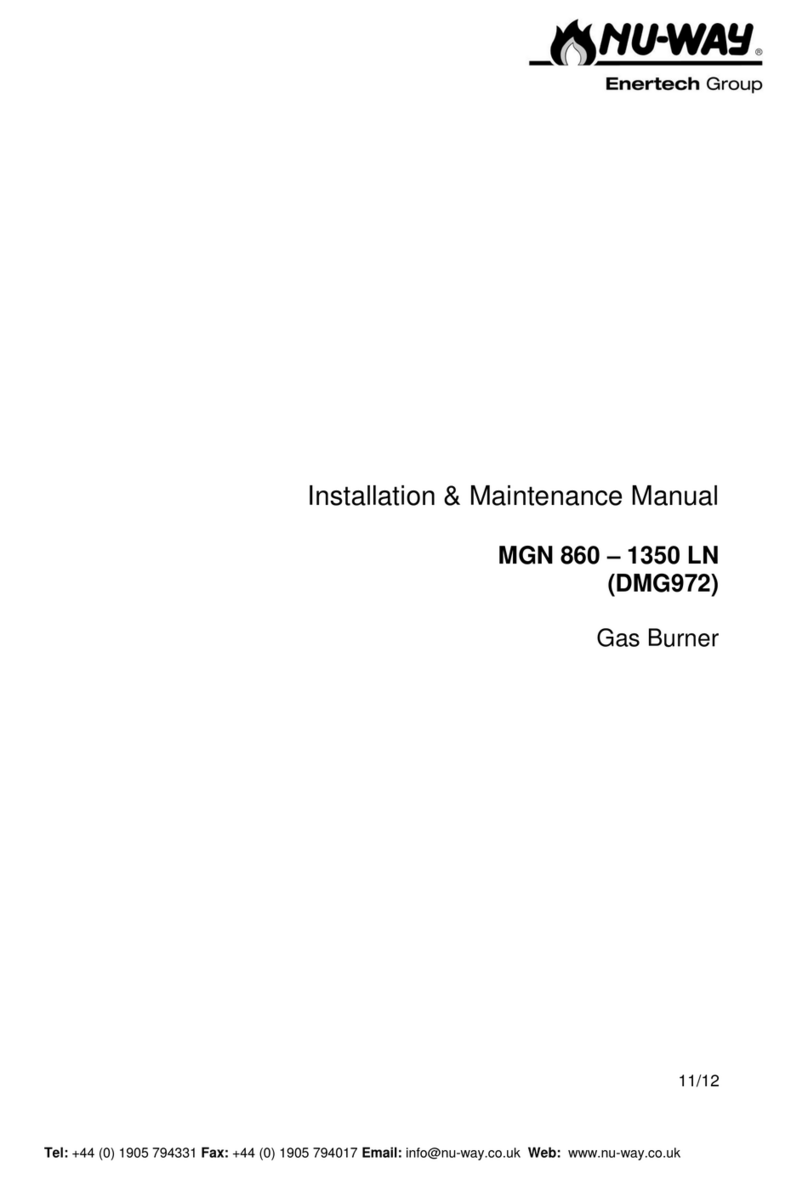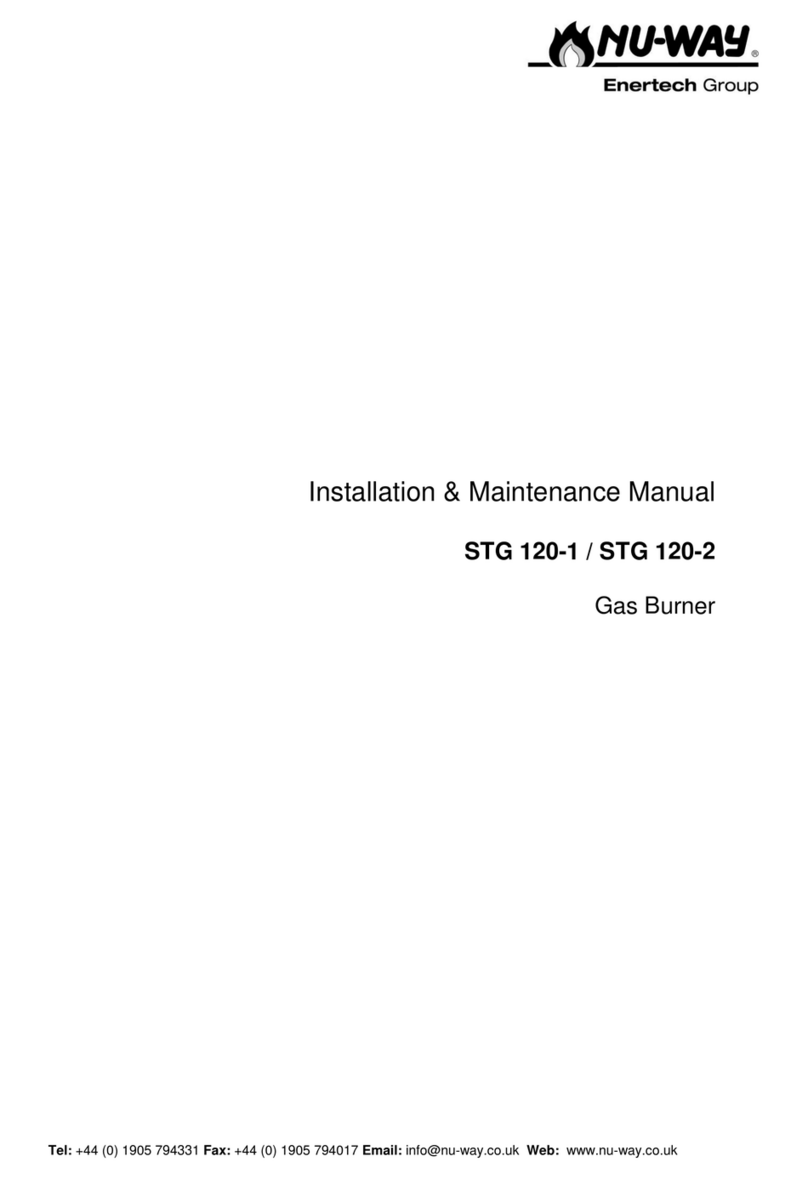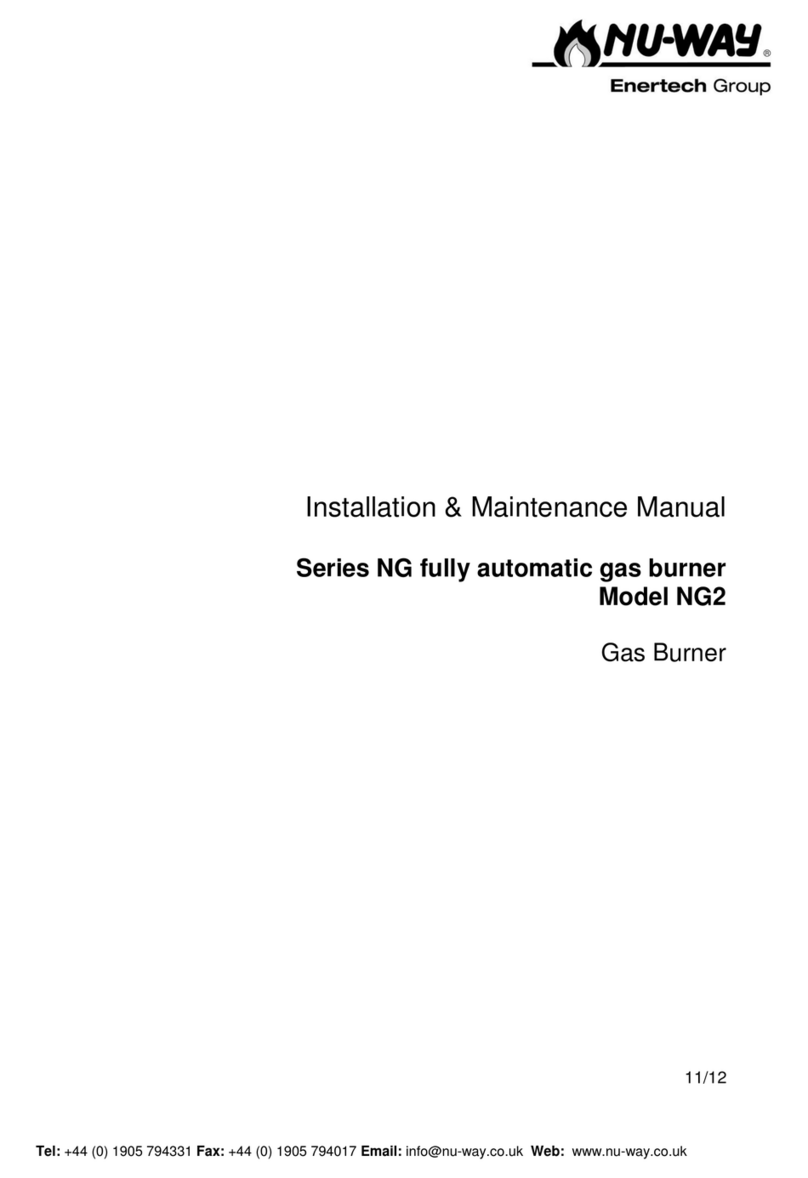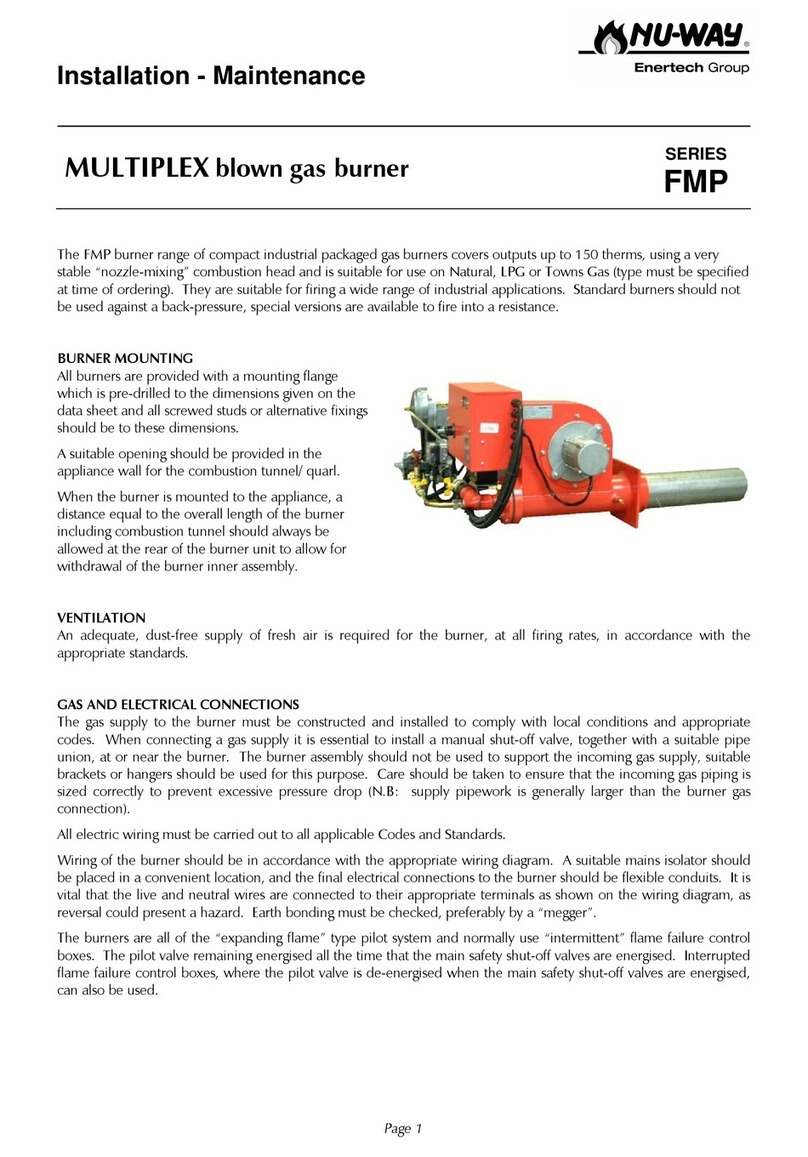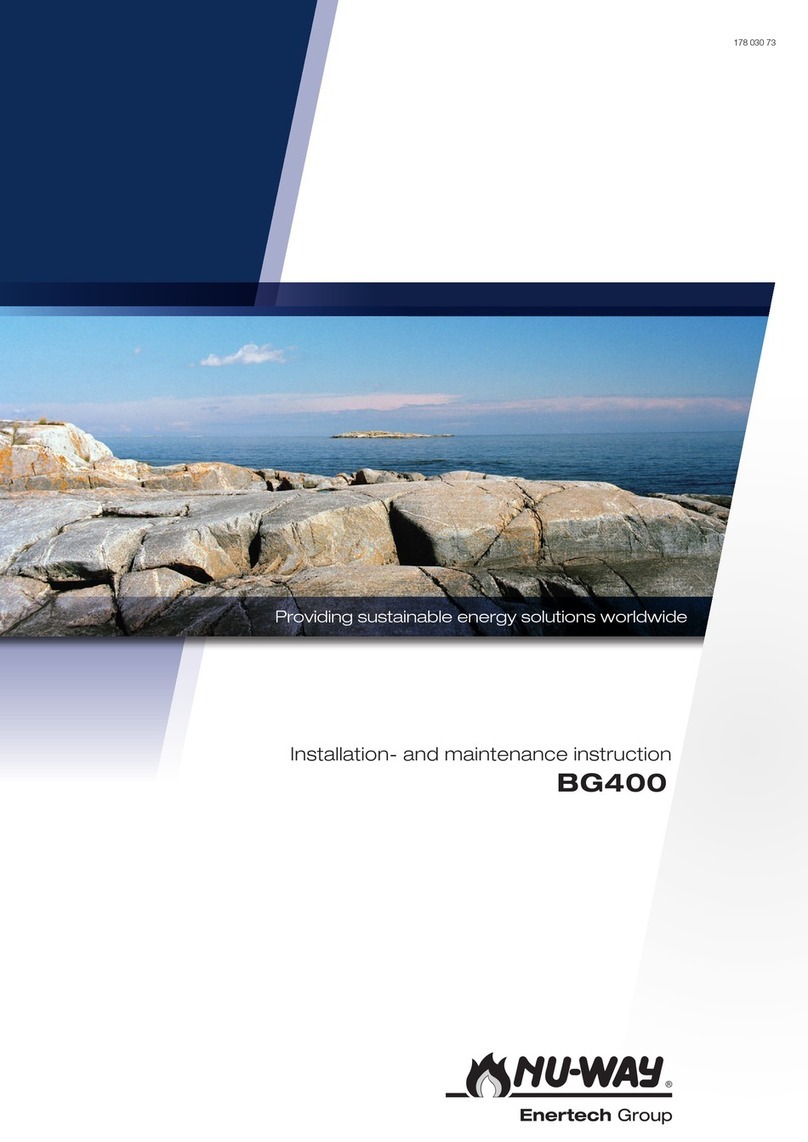Existing Appliances
The appliance should be prepared for installation of the MGN burner by thorough cleaning, including the
removal of all adhering tar, scale and dirt. An inspection should also be carried out to ensure that the
appliance is in good condition. Any doubt about the suitability of the appliance for gas firing shall be
referred to the appliance manufacturer.
Combustion Chamber Conditions
When the burner is fitted to an appliance designed to work under balanced or negative combustion
chamber pressure conditions the over-fire draught must not exceed 0.25 mbar.
Gas Supply
The gas supply pipework to the burner must be appropriate to local conditions and must be constructed
and installed in compliance with appropriate Codes and Standards. It shall be of sufficient size to satisfy
the pressure and volume flow requirements of the burner under all firing conditions. Checks should be
made to ensure that all meters and other components are appropriately rated for the maximum gas flow
rate anticipated.
It is essential that a 90° manual isolation valve is fitted upstream of the gas control train to allow the burner
to be isolated for maintenance. The size of this valve should not be less than that of the burner control
train in order to avoid any restriction in gas flow.
Gas Boosters
When a gas booster is used the gas pressure at the booster inlet must not fall below 10 mbar under any
conditions. A low gas pressure switch must be fitted on the upstream side of the booster to prevent it
starting if the supply pressure is insufficient. An additional pressure switch should be used to monitor the
pressure downstream of the booster and prevent the burner going to high fire if the pressure is insufficient.
The booster should be installed as near to the burner as possible. It should be positioned on a firm, flat,
horizontal surface using anti-vibration mountings. All connecting pipework should be well supported and
accurately positioned in order to avoid stressing the booster casing. The use of flexible connectors, which
reduce both pipework stresses and transmitted noise, is strongly recommended. The gas supplier should
be asked to recommend the size of pipework between the meter and the booster to ensure that the
required pressure and flow are available.
Electrical Power Supply
A three-phase 50Hz supply is required. Power requirements are listed in the Table on Page 7. The power
supply provided must comply with all relevant Codes and Standards.
UNPACKING AND ASSEMBLY
To safeguard against damage in transit, MGN burners are supplied in partly assembled form, comprising
two units:
- The burner body, complete with control package and flame tube assembly.
- The gas control train.
To assemble the burner:
- Fit the gas control train to the burner body using the gasket supplied, ensuring that the gasket is fitted
correctly with all the holes corresponding with those on the burner flange.
- Connect the air inlet/impulse pipe from the SKP75 air/gas ratio controller to the left-hand side of the
burner body.
- Connect the multi-pin plug on the gas valve train to the socket on the rear of the control package.
Note: In some circumstances it may be advisable to fit the burner casing to the appliance before attaching
the gas control train.
MGN 3300 & MGN 4000 Page 6


















